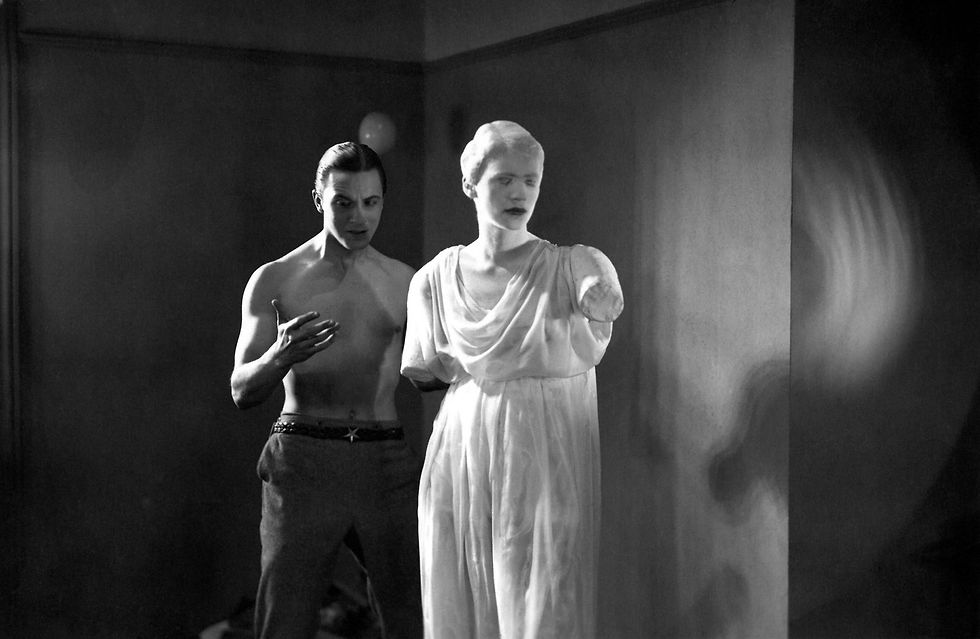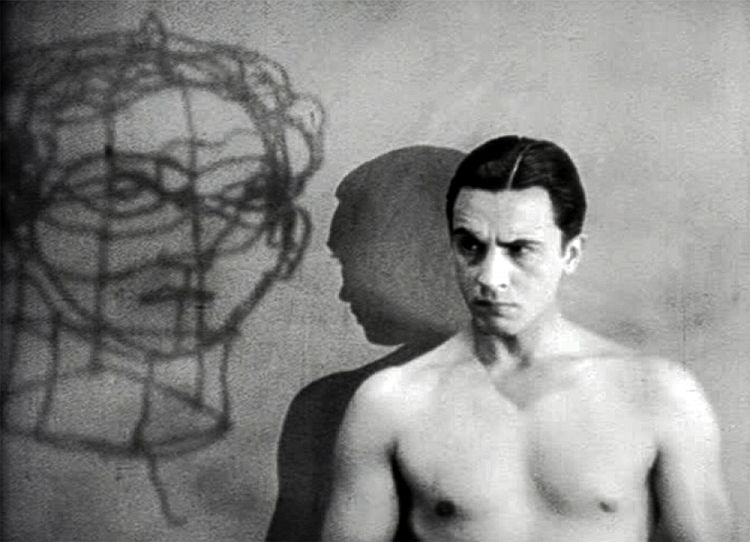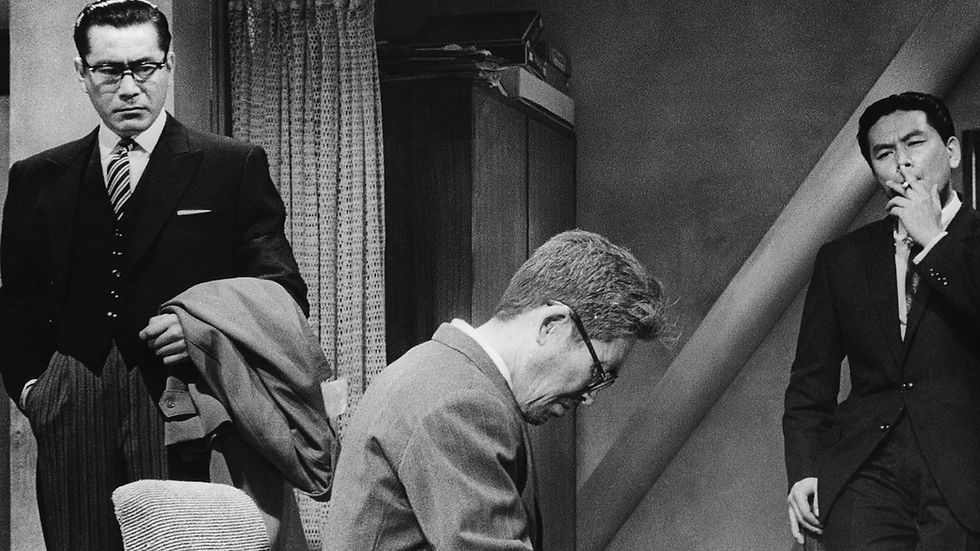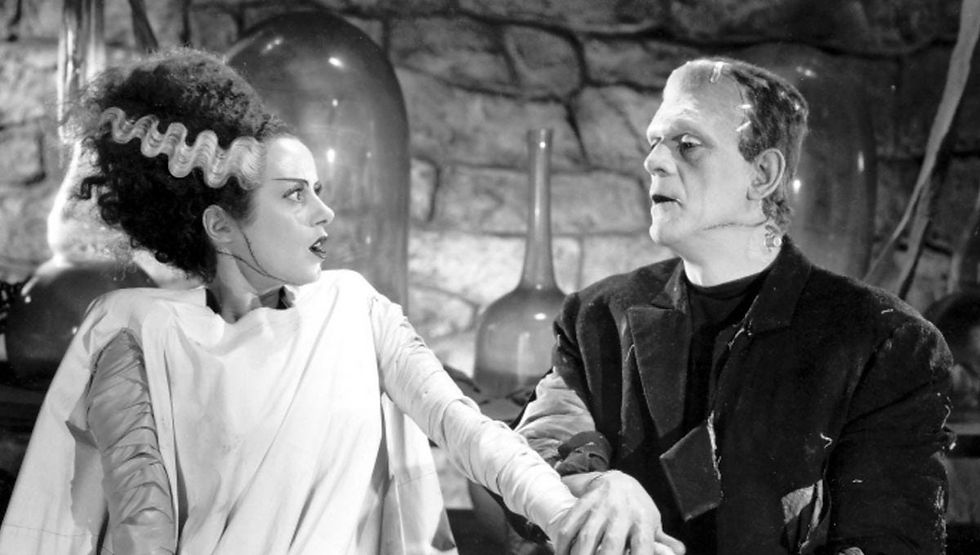Blood of a Poet (1932) Review - Dylan McCully
- Dylan McCully
- Oct 2, 2023
- 3 min read
Written by Dylan McCully, 10/23/22
Dylan McCully's Cinema: https://www.imdb.com/list/ls521125877/

As a major fan of surrealism in art, Luis Bunuel's films and Jean Cocteau's Orpheus trilogy are some of the first surrealist films that I checked out. Immersively creative and thought-provoking, Cocteau's The Blood of a Poet is a legendary exercise in early surrealism. Provocative imagery was extremely uncommon in cinema back in the early 1930's which makes films like this much more important.
The film is divided into four episodes. The first of which is "the wounded hand, or the scars of a poet." A painter sketches a woman's face on a blank canvas and her lips start to move. He wipes away her lips with his hand, but then they appear on his hand. Most of the time, the main actor in these scenes is placed in front of a dark grey wall so he sticks out at all times. There are clever graphic sort of match cuts made to represent what happens such as the cut to the lips on the hand talking to the statue or the mask spinning representing time turning as we go to the next day. The Blood of a Poet is really timeless in the imagery and feelings it creates, such as when at the end of the episode, our character wipes his hand-lips on the statue and it comes to life.--

The second episode is called "Do walls have ears?" The statue tells the poet to go into the mirror, which after checking it out falls into, as it splashes like water. Although the cuts aren't seamless, the special effects in this movie are still impressive. The poet wanders hypnotically through darkness as he finds his way at a hotel, peering through many keyholes at the various hotel visitors. The poet moves like oxygen is water, very fluid but slowly. In these hotel rooms, people are shot, crawling on the ceiling, and most interesting some sort of hermaphrodite. The hermaphrodite's room is one of the most interesting visuals in the film: it starts off with a bed, a completely black room and a spinning spiral that's just like the hypnotic nature of the film. First, a head appears in the side wall next to the bed, like one of the cardboard cutouts you can stick your face in at a carnival. Sudden cuts make different body parts drawn in chalk appear and sometimes one of the actors body parts will appear through the wall too. Now from a new angle, the actor takes off a cloth revealing "Danger of Death" written out. We cut back to the poet as the hermaphrodite hands him a gun, and gives him instructions on how to shoot himself. "Mirrors should reflect a bit more before sending back images." is what the narrator says as the poet falls back out of the mirror, into the room with the statue. It's probably much better to actually see, rather than me describing it, but I felt obligated too as it's one of the best scenes in the whole picture. The poet smashes the statue then becomes one.
The third episode is called "The snowball fight" and consists of a snowball fight that turns into a death match. Over the dead body, a table appears on which the sharply dressed poet and an elegant woman are playing cards. This starts the fourth episode: "The profanation of the Host." Royal figures watch on from a balcony above as the woman beats the poet, and he shoots himself. Those from the balcony clap.
"Having achieved her purpose, the woman became a statue once more, or, in other words, an inhuman object with black gloves in contrast to the snow upon which her steps would no longer leave a trace... the mortal tedium of immortality."
I'm sure there are more qualified thinkers who would better suit to analyze the film than I, but I'll leave you with my interpretation. The message is on how the goal of a lot of people is to become wealthy, famous and powerful, yet when you reach that "immortal" status, you've already lost all humanity. Martyrs who smash these "statues" that represent the institution usually end up being corrupted by the same temptations that come with power and fame. Poets or artists who make it big lose their integrity while doing so. If you are interested in surrealism, watch The Blood of a Poet for a stellar early example. 8/10
Jean Cocteau Ranking:
Blood of a Poet (1932) - 8/10






Comments